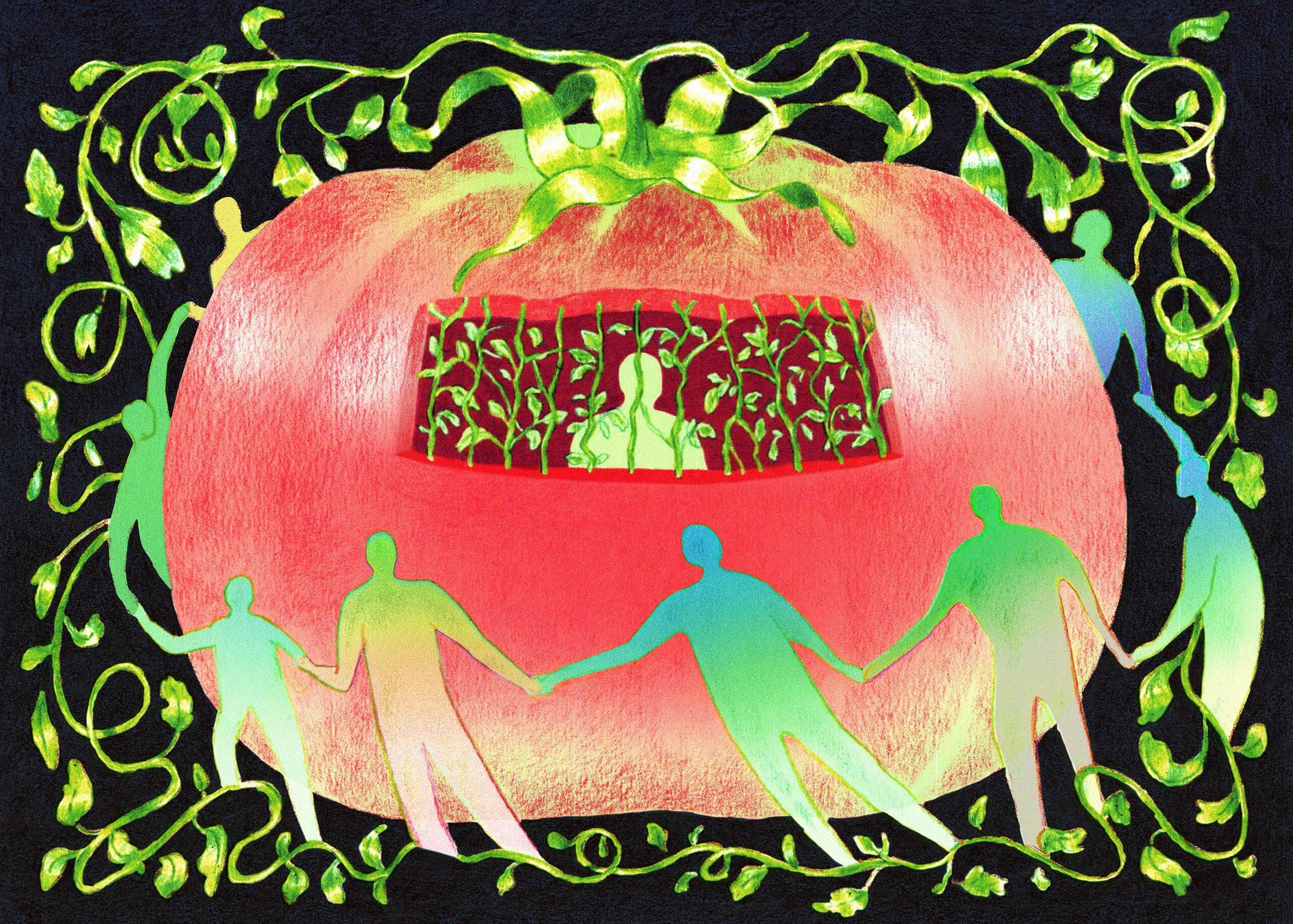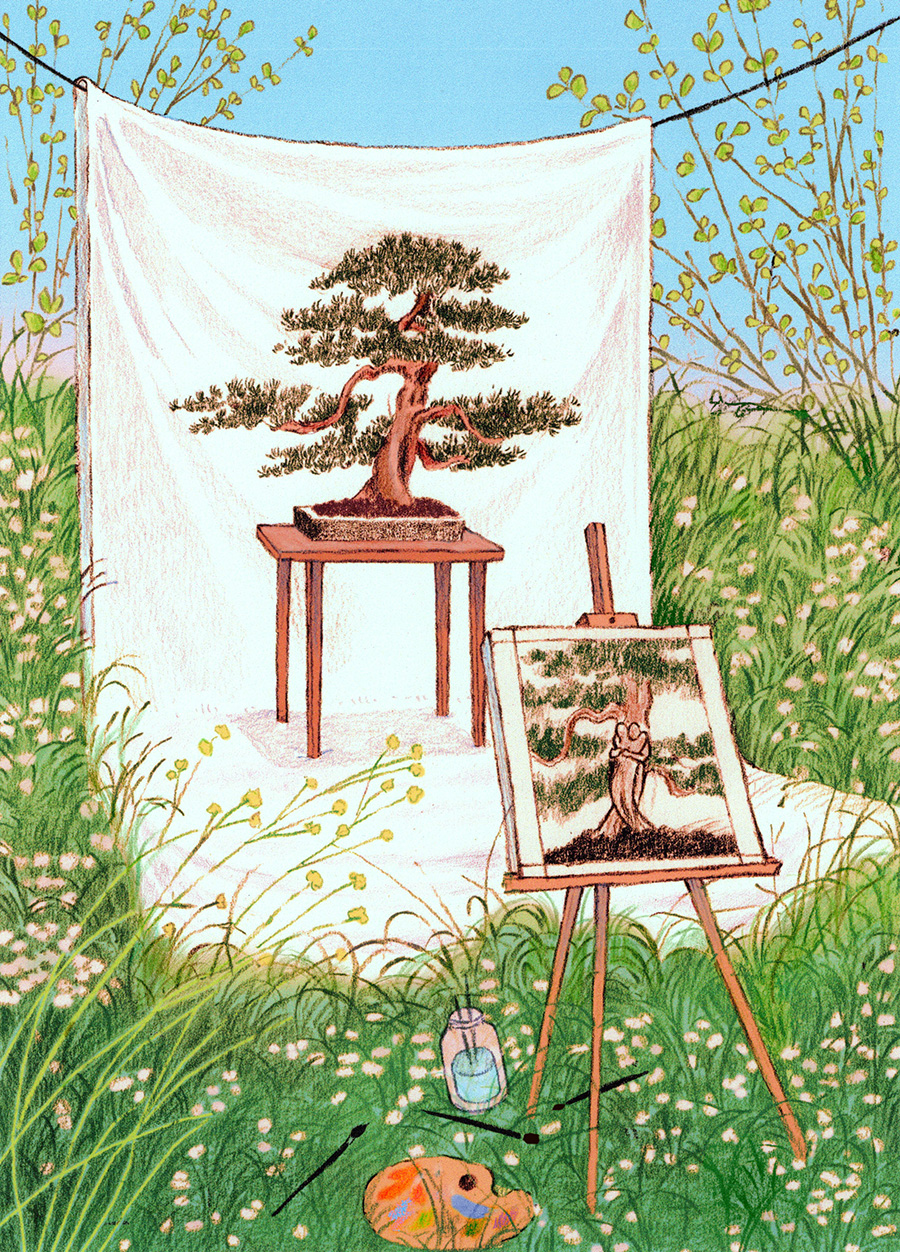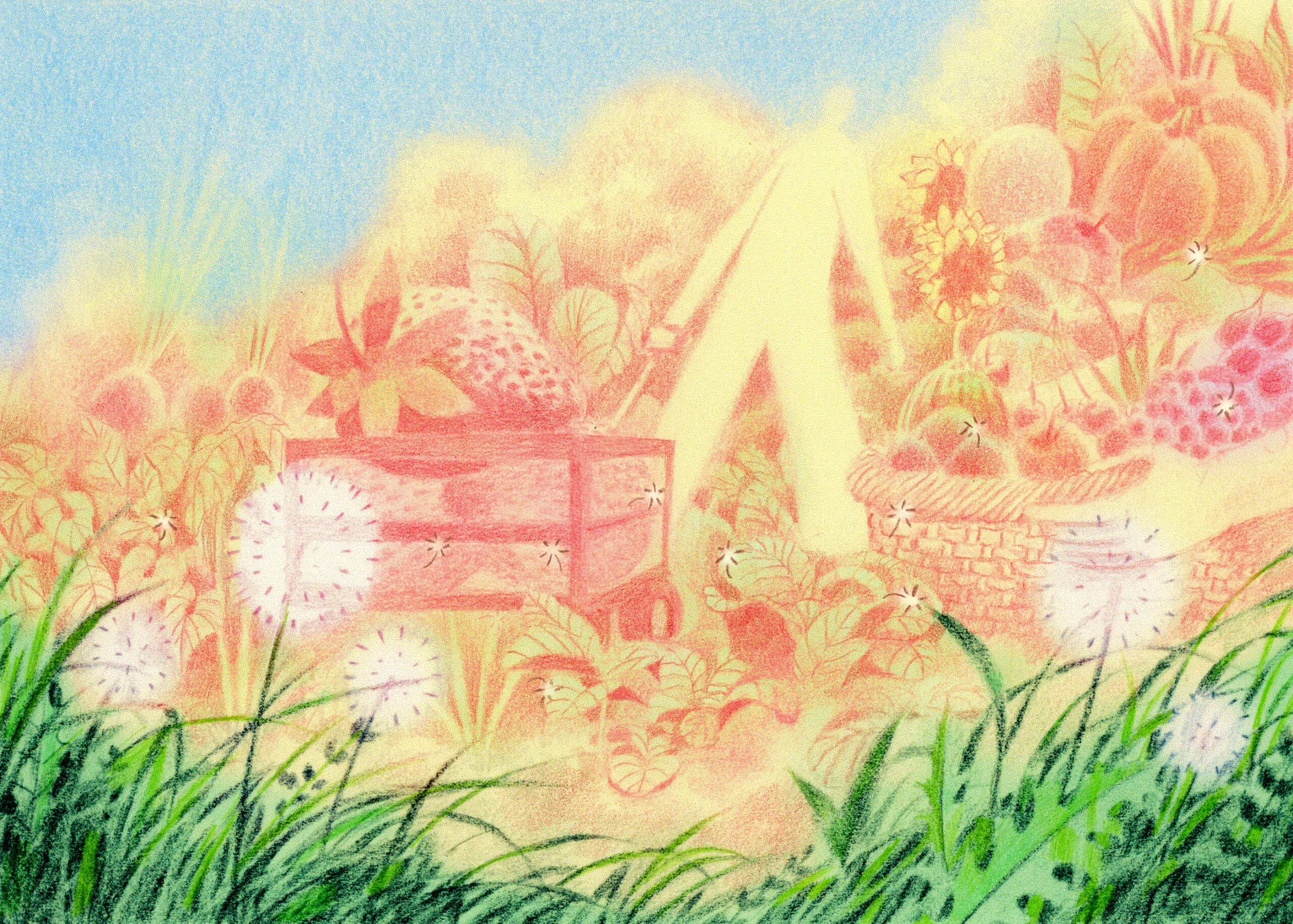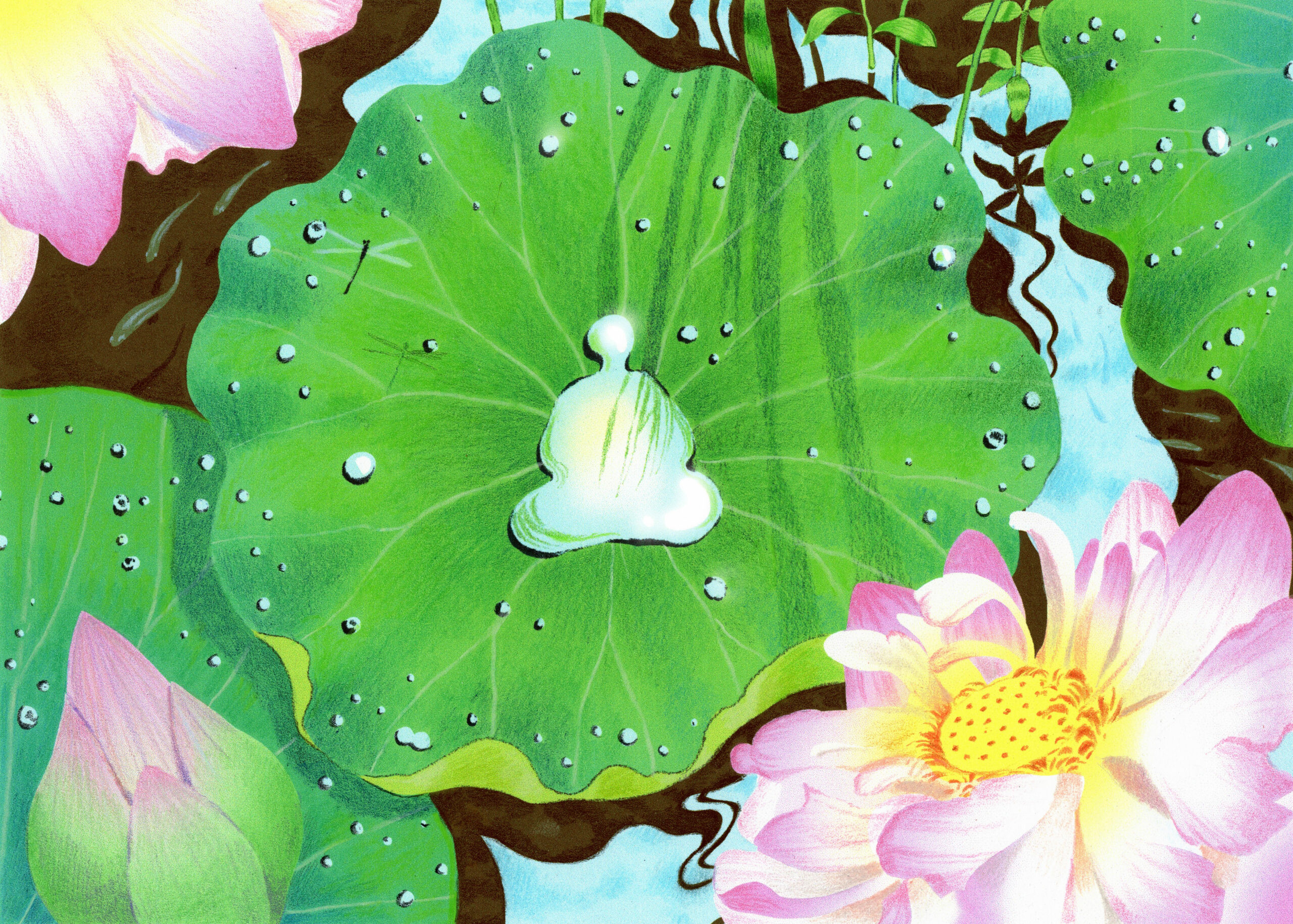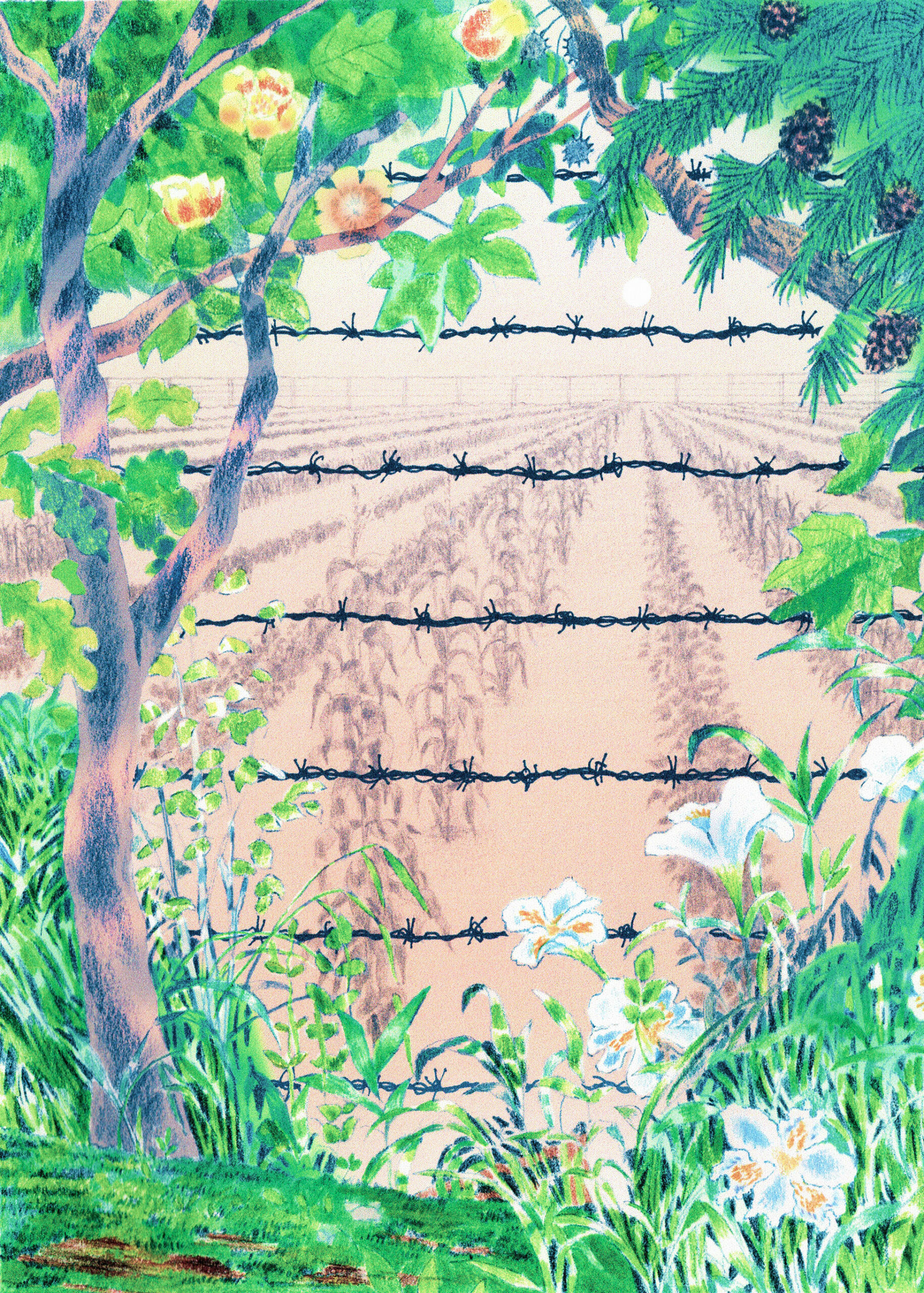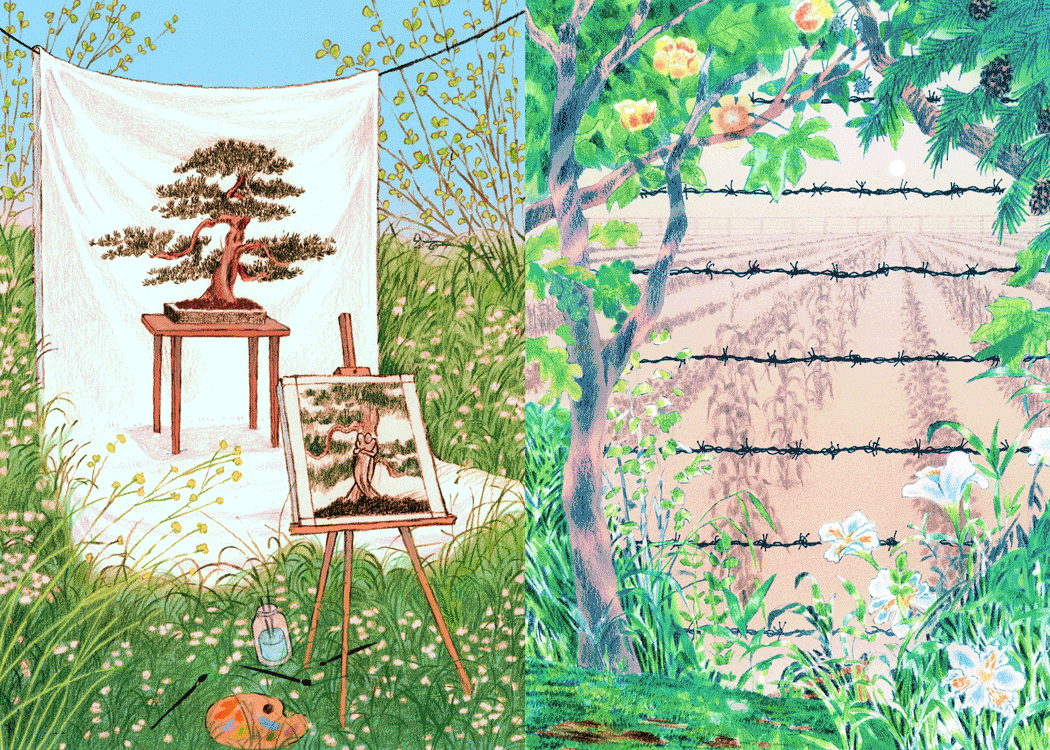MOLD’s series of Food and Abolition considers how the political, social and economic project of prison abolition, ending the prison industrial complex (PIC) and setting in place reparative networks of care, can inform our movement for redesigning sovereign food systems.
Lawrence Jenkins is an incarcerated farmer, educator, artist, and activist in Washington state. He is currently preparing for clemency while working towards building community around a reentry plan that centers food systems work. In this conversation with Joshua Sbicca, the Director of the Prison Agriculture Lab at Colorado State University, the two discuss the power of farming while incarcerated, especially when driven by commitments to agroecology, food sovereignty, and the power of food as a connecting force. The conversation has been edited for length and clarity.
Josh Sbicca:
Can you tell me about how you got into agroecology and food sovereignty work?
Lawrence Jenkins:
Growing up I always heard stories about my grandfather who was a farmer and had land in Mississippi where he raised small livestock and grew a variety of crops. I never met him while he was alive, but I had to speak at his funeral, when I was 12 years old, and talk about his love for farming and his life and legacy on the farm. These stories gave me hope and becoming a farmer became an aspiration for me. But at that time all I had access to were forests and waterfronts on the edges of Seattle. This is where I spent all my free time.
A couple years later, at age 14, I got caught up for a robbery and was sent away to Green Hill School, basically a juvenile prison. From there I was transferred to a transition home, Jessie Dyslin Boys Ranch where I was assigned to be the “animal keeper/field hand.” It was meant to be a form of punishment but instead, it became the opportunity of a lifetime to learn farming and to prepare myself to one day carry on my grandfather’s work! I worked alone and for the most part taught myself how to raise small animals—chickens, ducks, rabbit, a goat, and a pig—and I grew a variety of crops that were sold at a local supermarket.
Having such a strong relationship with nature along with knowledge around raising animals and food made agroecology a thing for me before I ever studied it as a science. I was just real curious about the ecosystem as a whole and how every living thing supported the other. I remember having to overcome my fears of bees, small rodents, snakes, and coyotes and just accept that they were dependent on the ranch too. My experience there was cut short because my time was up, and I had to go back home to Seattle.
Once back, I did hauling, plumbing, and small businesses with my family. But I got locked up again at 18. This time, they put me in a work camp where we did forestry and cutting trees and fighting wildfires. I was working out of the Department of Natural Resources as exploited labor with no protection. Looking back, I didn’t have consciousness of conservation. I cut down a lot of trees for commercial logging. I did that for three years straight.
I was released at 22 years old from the work camp. Ten months later, I was accused of an officer involved shooting where I was sentenced to 26 years in prison.
JS:
What was your experience like when you went back to prison? Was there any programming or work related to agriculture?
LJ:
Upon returning to Washington State Penitentiary in 2014, the Sustainability in Prisons Project had a vision to start a horticulture program to teach farming. It would also supplement the chow hall because the menu had been recently taken over by Washington State Correctional Industries Foods, which was basically TV dinners and peanut butter and jelly and packaged foods. I was selected to help start this program and build it from the ground up.
I’m inspired by the thinking behind the Black Panther Party’s Survival Programs. Like how do we support the people? Not just how to produce our own food and medicine, but more broadly how do we advance community protection.
JS:
Can you tell me about the early years of that program?
LJ:
The space that we worked in was called the Sustainable Practices Lab. It’s basically a warehouse with different departments, including upholstery, metal shop, and woodworking. We were essentially getting paid to do a job, and there were concurrent environmental literacy classes called Roots of Success. The curriculum was something we had to take. It was a ten-week course, and we would rotate around each station in the warehouse. We would get hired on to a department after we completed that class.
A lot of recycled materials were brought in by truckloads. We would clean the material and find a new use for it. The metal shop would repair and reweld weightlifting equipment from the prison. The wood shop would do wood reclamation projects and make tables and chairs. But they also did special projects to donate to charities, like stuff teddy bears with cotton. But I worked more out of the aquaponics and indoor nursery as part of the new horticulture program. Prisoners called this the “green zone.” In general, all this work was a mixture of science and creativity.
JS:
What was it like to learn the ins and outs of different agricultural systems?
LJ:
I had to learn a lot of the fundamentals of propagating and seed germination and spacing your plants, things like when to plant, how to till the soil, and implement compost into the soil. But it felt natural because of my prior experience farming. We grew that program by trial and error. Just experimenting with a bunch of things, seeing what worked and what didn’t with the limited resources that we had access to. By year two, we dialed in our system as far as the crops we wanted to grow. We knew what did well. We knew what needed more special attention. And we knew what crops needed to be in a controlled environment, like in the hoop houses we built out of recycled materials from other lab departments. We got really good at growing in the ground with soil and making compost out of the food waste from the kitchen. Vermicomposting was another thing that we were experimenting with, red wiggler worms in particular. All this would enrich the soil.
There was also a commercial greenhouse that ran on a perlite system with Dutch buckets, recycled oil, and swamp coolers. Because the system didn’t have soil, we struggled with finding the right pH levels for the water, and how best to fertilize. That took a little longer for us to figure out. We were also raising tilapia and getting creative. We collaborated with the metal shop to create an aquaponic system with certain lighting that could grow leafy greens indoors. In general, we were exploring sustainable practices. We’d read together and learn from educators in the community, including farmers. As prisoners, we also brought our different backgrounds and experiences to that space.


JS:
Tell me more about the food you were producing?
LJ:
All the produce that we grew went directly to prisoners, to the over one hundred workers in the Sustainable Practices Lab. As Correctional Industries took over the chow hall, we saw the green zone as our counter response. That’s not about to be our only source of food. At first our production wasn’t high yield. It was just enough to make salads or amend some of the meals that the workers ate.
As we started producing more, we introduced a proposal to have rental plots for prisoners that didn’t work in the green zone, like in the medium security units. We were intentionally centering cooperative economics and solidarity economics. Prisoners had access to 4×6 feet of growing space for seven dollars for a whole season from April to September. With the help of Sustainability in Prisons Project staff, we had a sub account where we could get our family members to donate and hold money for the people renting plots. That money wasn’t to go to the prison. It went back to the operation. We prepared the plots for prisoners to sow seeds and grow. We provided compost and plant starts as well. That program was one of the most beneficial to prisoners and so the plots quickly filled and there was a waiting list. So, we just maintained that standard of “We eat what we grow.” Although there were times when we decided to use the produce in other ways. We donated plant starts to schools, community centers, or shelters. We wanted people that didn’t have access to food to at least be able to grow their own. This was something we could support as prisoners and took this very seriously.
JS:
Thanks for sharing this part of your story. It sounds like there were several autonomous prisoner-led practices that used growing food for different purposes. We’ve talked about this before, but can you explain how you view the green zone as a kind of survival program?
LJ:
Most of us are here for some form of survival crime or defending our family. So, I’m inspired by the thinking behind the Black Panther Party’s Survival Programs. Like how do we support the people? Not just how to produce our own food and medicine, but more broadly how do we advance community protection. How do we protect our community from the brutality of the police? How do we challenge the racism that’s tearing the poor and oppressed people down. These conversations naturally come up [with other imprisoned people]. It’s like, well, we got this much power to do this. Why are we sitting here like we’re codependent on the state? Why don’t we build our own programs?
You need to remind people like, “Hey, we’re not going to assimilate. We’re not going to be the thing we’re trying to abolish.” So, political education is vital. As we make survival programs related to farming more accessible to people, they gain the capacity to then build a farm. We need to make regenerative agriculture an economically viable opportunity and always prioritize the needs and wellbeing of the people over profit. So, at each stage, how do we keep people aligned with the things that are going to lead us towards freedom and true liberation?
JS:
How did day-to-day conditions organically lead to your political analysis?
LJ:
While we had certain tasks at the outset of creating the horticulture program, there became a strong cultural and political component. A lot of people were moved by seeing the breakdown of prison segregation. This directly relates to conceptualizing the green zone as a survival program.
Initially a lot of the guys that were selected to start the horticulture program were people like me that were classified high risk by the prison based on our charges and possible affiliations with certain groups or gangs. They wanted us to have an opportunity to work to keep us out of trouble. I think the logic behind placing people like me in a more physical and outdoors environment working more independently was to reduce the risk of what could potentially happen in the crammed warehouse jobs. Our crew of 10-15 guys wanted to be outside away from the prison politics to have a place to breathe.
But we were individuals from different races and different affiliations and so we had to learn to work with one another. We had to challenge the racial segregation and tension and politics in the unit. We did that by having real, intentional conversations around like, “Hey, we’re going to leave our politics at the gate. We’re just going to work. We’re going to dig the dirt. We’re going to level this ground out. We’re going to prepare the site for the greenhouse frame to come in.” We became intentional about the goal, which was to build something for us that’s going to sustain us. But we knew that we had to be responsible and accountable. This would help us work and co-create together.
At first, we worked in clusters with people who were our own race. But once the produce started growing and certain people had skills that directed them to tasks across racial boundaries things changed. People that wanted to work more with the soil, no matter what race they were, broke the divide. Then it just became naturally like, “We got to get this done. We got to get this food in the ground, or we got to get this hoop house built or these planter boxes built to produce more food.” Prison politics became less and less relevant because of our shared responsibilities. The common goal became the focal point.
JS:
So, the green zone became an experiment in breaking down boundaries? Did that spread in any way?
LJ:
Well, I think what really resonated for us was when we started harvesting the produce and sharing it with the guys inside the warehouse. The moment people were able to eat produce they thought they would never eat again in their life because of how much time they had was powerful. Most of us on the crew and in the Sustainable Practices Lab had over 20 years on our sentence, including life sentences. To see that our collective work to produce something could bring a level of humanity to a place through freely sharing across groups and across race helped grow the program. For example, we would ask what people wanted grown. This led to people sharing culturally significant meals and recipes. It opened conversation around where people come from, stories about family, and memories of homelands. Someone might want to grow ingredients to make pico de gallo. We grew what the people wanted.
I think by taking down barriers that were constructed from the streets and spilling over into penitentiary politics we were able to realize the significance and the power of working to sustain our survival. We re-empowered ourselves. We could say, “We’re greater than our worst mistake.” We didn’t really have the literature to tell us how political that was or how radical that was, but we felt it. And we embraced it. And that helped form solid relationships between the groups. When things came up outside of work, it was easier for us to communicate through that and find alternative ways to deal with things. It changed the culture. It made it to where we didn’t have to eat food that was being fed to us that we thought was poisonous because of being packaged and ultra processed. We created alternatives to that. We were doing this together to protect ourselves. That’s how our work became a survival program.
It’s important for people to see the foundation of what a survival program through farming looks like in prison, how it can be built through collective or community work. This is especially important in an environment that’s designed to keep prisoners at odds with one another to keep racial tensions going. These are the same challenges that communities are up against right now in their neighborhoods. People can’t fathom the idea of coming together to build a community farm or a community garden that everyone could have access to, let alone why it’s even important. But this is an opportune time for people to evaluate and assess what that cause is for people to lean into, to build and how easy it is, how cost effective, and the impact that you have not just on health and well-being, but on self and community.
JS:
Thanks so much for sharing some of your story and the story of the green zone. I appreciate the work that you’re doing. How can people reach you?
LJ:
Through JPay or traditional mail:
Lawrence Jenkins 306665
H4-B5-135U
Stafford Creek Corrections Center
191 Constantine Way
Aberdeen, WA 98520
